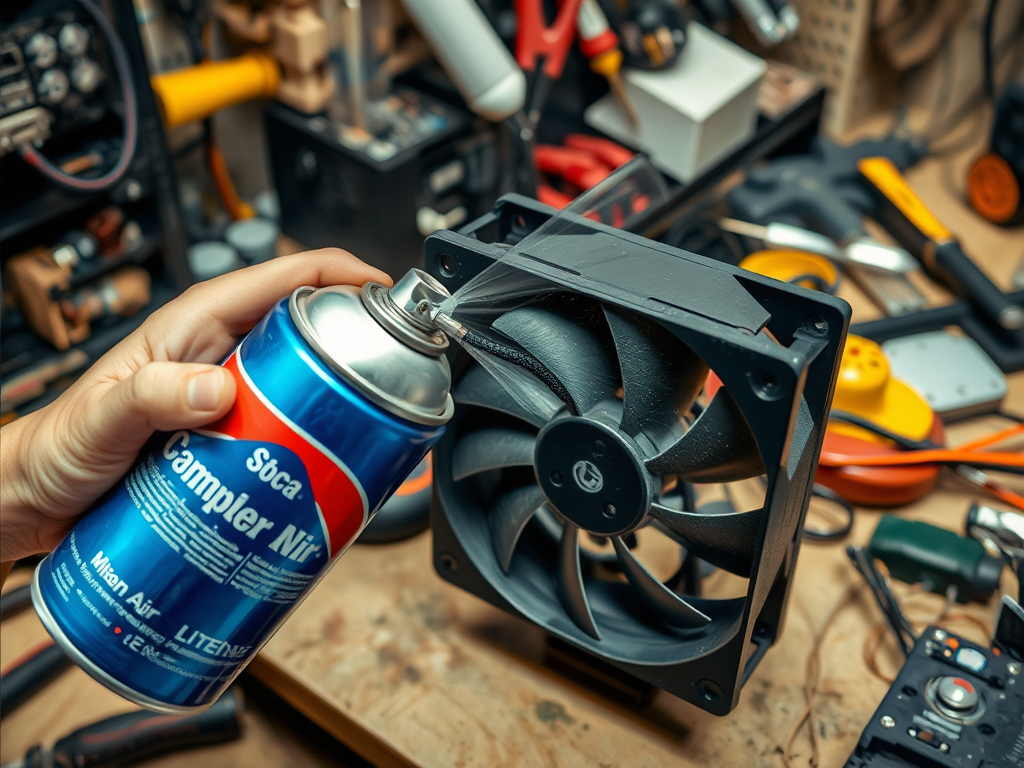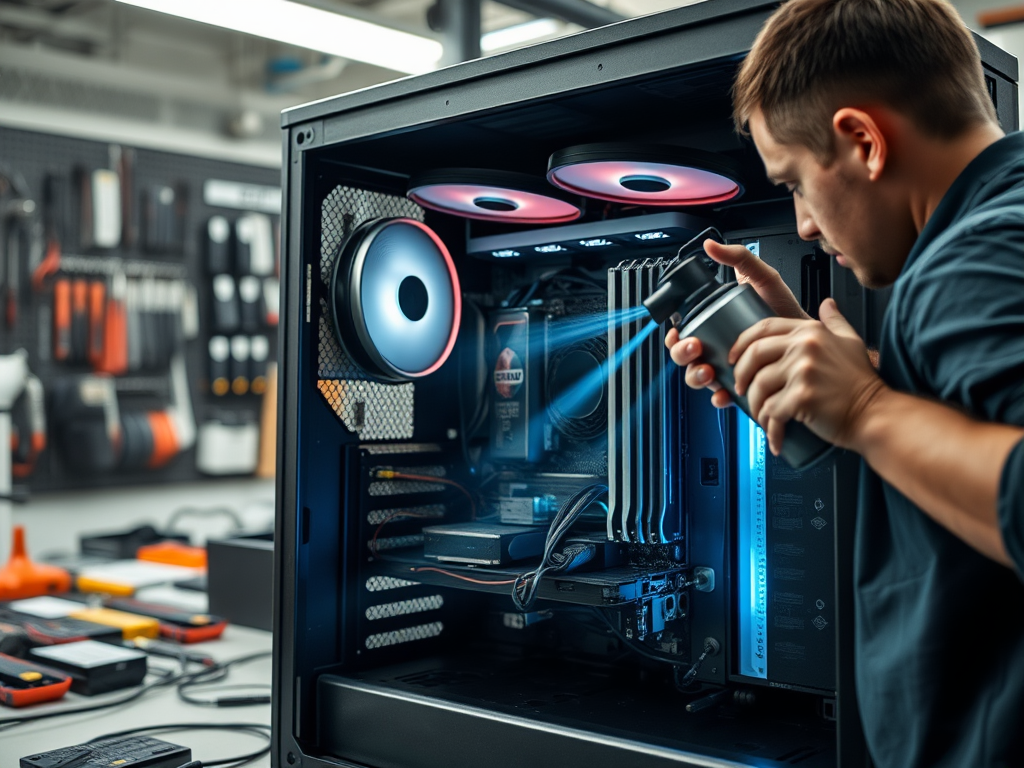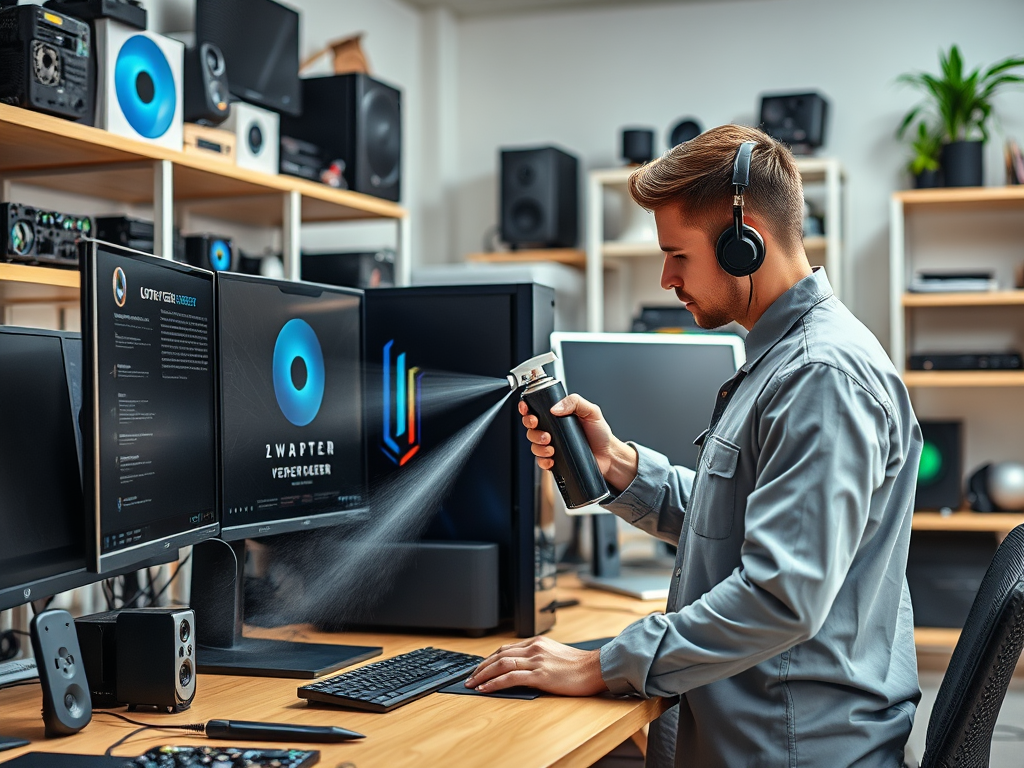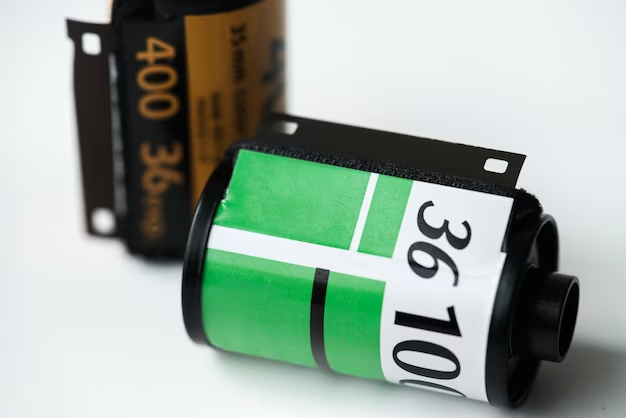Maintaining a clean PC is essential for both performance and longevity. A well-maintained computer can run more efficiently, reduce overheating, and increase the lifespan of your components. One common method of cleaning that many users turn to is compressed air. This tool has gained popularity largely due to its effectiveness at removing dust from hard-to-reach areas. However, while it may seem like a simple solution, there are numerous myths and facts surrounding its usage that every PC owner should consider. In this article, we will explore these misconceptions and truths, helping you make informed decisions about your PC cleaning routine.
When we talk about compressed air, we’re referring to a product specifically designed for cleaning delicate electronics. It contains air that has been compressed in a canister, allowing users to blow dust and debris away from sensitive computer parts. Popular among DIY enthusiasts, compressed air products are easily accessible online and in stores, making them a go-to choice for many tech-savvy users. Yet, it’s crucial to approach this cleaning method with a balanced perspective, as there are both benefits and potential pitfalls.
What is Compressed Air?

Compressed air is a versatile tool utilized across various industries, primarily for cleaning. Its predominant use in electronics stems from its ability to reach tight spaces without the need for physical contact. Unlike wiping with a cloth, which can introduce static electricity or leave fibers behind, compressed air blasts away debris effectively. Various types of compressed air products exist, ranging from handheld portable options to bulk larger canisters for extensive cleaning jobs. Such diversity allows users to select a product based on their specific needs. However, understanding how to use these tools correctly is imperative for safe and efficient cleaning.
Myths About Using Compressed Air on Your PC

There are numerous myths concerning the use of compressed air for cleaning computers. Let’s take a look at a couple of the most common misconceptions:
- Compressed air can clean all parts of a PC: This is not entirely true. While compressed air is excellent for removing dust from many areas, some components require more delicate handling.
- Using compressed air rarely causes harm: This myth can lead to serious issues. If sprayed incorrectly, components can become damaged due to static electricity or moisture.
Understanding these myths will help you avoid potential pitfalls and approach the cleaning process more effectively. It’s essential to remember that while compressed air can be a useful tool, it isn’t a panacea for all cleaning issues in your PC.
Facts About Using Compressed Air
When utilized correctly, compressed air can provide efficient cleaning without the risks associated with direct contact. It works wonders for removing dust from fans, heatsinks, and other nooks and crannies that are hard to reach. However, it is also important to understand the safety aspects to ensure both your PC and you remain unharmed. The correct technique and distance are crucial in maximizing the effectiveness of compressed air. Ideally, you should maintain a distance of about 6 inches from the component you are cleaning. This distance prevents excessive pressure from damaging sensitive parts. When done properly, using compressed air can extend the lifespan of your hardware.
To effectively clean your PC with compressed air, follow these best practices:
- Always hold the canister upright to prevent liquid from escaping.
- Use short bursts of air rather than sustained blasts to avoid moisture buildup.
- Keep the nozzle at a safe distance from components to avoid damaging them.
By following these practices, you can ensure a thorough cleaning while minimizing risks to your PC’s sensitive components.
Alternative PC Cleaning Methods
While compressed air is a popular choice for PC maintenance, it’s not the only method available for cleaning. Here’s a comparison table of some common alternatives:
| Cleaning Method | Pros | Cons |
|---|---|---|
| Compressed Air | Effective in hard-to-reach areas | Can cause static damage if used improperly |
| Brush | Safe for delicate components | May leave dust behind |
| Vacuum Cleaner | Good for large debris | Can create static electricity |
This table highlights the distinctions between cleaning methods, providing insights into which technique may be best suited for your specific needs. Each method comes with its own set of advantages and risks, so understanding these nuances is crucial when deciding how to keep your PC clean.
Conclusion
In summary, while compressed air can be an effective tool for keeping your PC clean, it’s crucial to approach its use with an informed perspective. By debunking myths and acknowledging the facts, users can utilize compressed air safely and effectively. Just remember to use it judiciously, recognize its limitations, and combine it with other cleaning methods for optimal results. Keeping your PC clean helps ensure a smooth and efficient operation, allowing your machine to perform at its best.
Frequently Asked Questions
- Is it safe to use compressed air on my PC? Yes, when used properly, compressed air is generally safe for cleaning PCs.
- Can compressed air damage computer components? Yes, if used incorrectly or too close, it can cause damage to sensitive components.
- How often should I clean my PC using compressed air? It’s typically recommended to clean your PC every few months, depending on your environment.
- What should I avoid while using compressed air on my PC? Avoid tilting the canister upside down and spraying directly into fan mechanisms.
- Are there any parts of my PC that I shouldn’t clean with compressed air? Yes, components like the power supply and delicate circuitry should be treated with caution.


